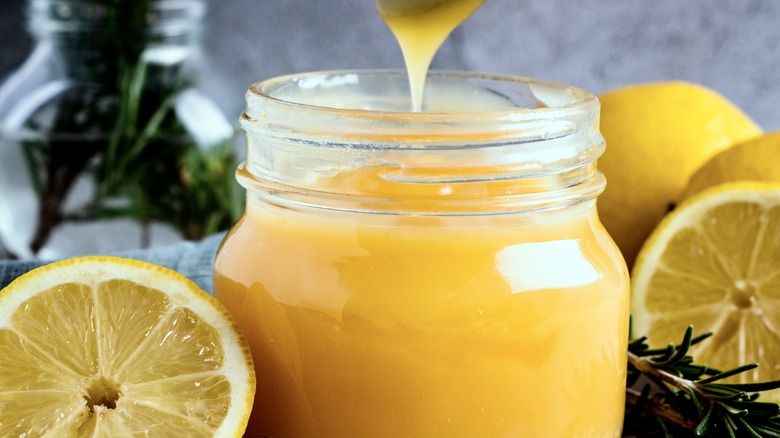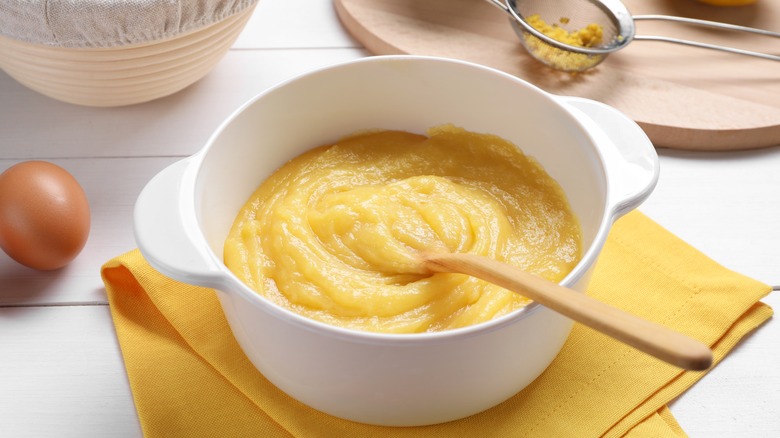Make The Easiest Lemon Curd Of Your Life Right In The Microwave
Lemon curd has a rich history that predates the 19th century. The recipe was first mentioned in English novelist Lady Charlotte Campbell Bury's 1844 cookbook "The Lady's Own Cookery Book." However, variations of it — called "lemon cheese" — can be further traced in history. Now, the tart topping is a staple in the England culinary scene and is commonly served with a traditional afternoon tea alongside a selection of sweet scones. Making lemon curd usually requires standing over a hot stovetop to monitor the mixture as it thickens, but with a microwave hack, the recipe can be easily made in less than 15 minutes.
The delicious treat is made of a blend of kitchen staples: Lemons, sugar, eggs, and butter. When the ingredients are properly prepared, the result is thick and creamy lemon substance that can be served as a topping with different types of breads and pastries, or with crepes or pancakes, or as a filling in a cake or pie. In fact, the versatile spread can even be used to make an unforgettable peanut butter sandwich or to coat chicken for a more complex roasted dinner dish. Making lemon curd in the microwave eliminates the amount of dishes and labor it takes to cook the sweet custard. And given the quick heating features of the appliance, it simplifies the process of cooking the topping, as it needs to be heated in small increments to get the desired texture.
How to make lemon curd in the microwave
To make lemon curd in the microwave, prepare the lemons by juicing and zesting them. To zest a lemon, use a sharp object — such as a knife or a grater — to remove and gather the yellow outer part of the fruit. Next, combine granulated white sugar and eggs in a microwave-safe bowl and mix until you get a smooth texture. Stir in the lemon juice, lemon zest, and melted butter. Add the butter in small amounts or allow it to cool to ensure that the eggs do not curdle. Then place the bowl in the microwave and cook for one minute. Once done, stir the mixture and make sure to scrape the sides and bottom of the bowl. Continue to repeat the process in 20 second increments until you get the thick, custardy texture. As a final step, push the curd through a sieve, cheese cloth, or fine strainer to remove any potential lumps. The recipe can be stored in the refrigerator for up to three weeks in an airtight jar or container.
Once you nail the recipe, you can use it to make other citrus-based curds. Lime and orange curds are popular variations of the recipe. Lime curd can be used as a base for a mixed-berry tart or with coconut cake. Meanwhile, orange curd is best served with an almond pavlovas or inside a chocolate cookie crust.

